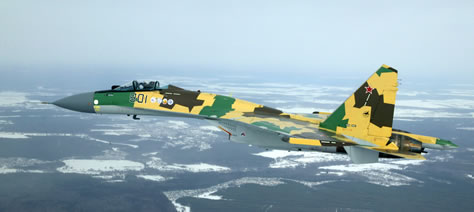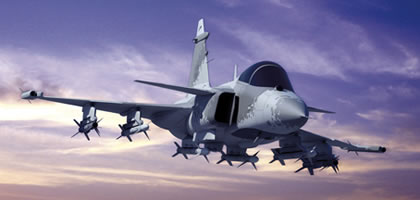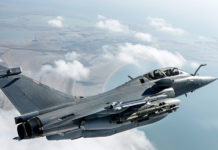
While Brazil is evaluating the proposals submitted by the three finalists – Boeing, Dassault and Saab, the government and Air Force are also reevaluating their longer term requirements in an attempt to expand the production base into more economical levels.

In November 2007 Brazil announced its plans to embark on a $2.2 billion F-X2 future fighter procurement, seeking to modernize its air forces’ first-line fighter fleet with 36 latest generation fighters. This modernization is long overdue, since the most modern asset in the arsenal of the Forca Aerea Brasileira (FAB – Brazilian Air Force) are locally built Super Tucano/ALX surveillance and light attack turboprops, built by Embraer. Its first-line operation units include a few squadrons of locally built AMX subsonic light fighters, which constantly receive phased upgrades from Italy and Israel, and 1960 vintage F-5BRs also modernized with Israeli avionics systems. A previous attempt to modernize the Brazilian Air Force failed in 2004, due to lack of political support. Brazil then opted to buy a squadron of 12 French Air Force Mirage 2000s to replace its obsolete Mirage III mach-2 fighters.
The program, currently known as F-X2 reached its important milestone almost a year later, in October 08 as the Air Force selected the three fighters that could meet its requirements. These included the American Boeing F/A-18E/F, Swedish Saab-39 Gripen NG and French Rafale from Dassault. Eurofighter and Sukhoi were out of the list, as well as the U.S. F-16 and F-35. By February 2009 all proposals were submitted, only to find that the Brasilians and Russians may have renegotiated another deal.
Following significant Russian pressure, the Su-35 re-emerged as a candidate, but, according to Russian sources, the volume of the program increased dramatically and now counts 100 aircraft, almost matching the Indian MMRCA planned acquisition of 126 aircraft that has been stirring the entire military world in the past years. Naturally, Moscow is proposing local production of the aircraft in Brazil. The Brazilian Air Force has already made a clear choice about the types of weapons it will be fielding on its new fighters. These are likely to comprise of the South African Darter-A short range IR missiles, being developed under cooperation between the Brazilian Air Force and South African Denel and the Israeli Derby beyond-visual-range (BVR) missiles, already adapted for Brazil’s modernized F-5BRs. WHile Darter-A is being integrated with the Gripen, to fit on the South African Air Force fighters, the Derby is believed to be one of the weapons the Indian Air Force has earmarked for its MMRCA program.
This dramatic change will undoubtedly call all participants to recalculate their offers. It is also expected to draw extreme pressure from Europe, to reconsider the Eurofighter Typhoon. However, most bidders would, undoubtedly remain cautious trusting government officials in San Paolo to remain committed to such a long term program, securing political and financial over the next decade. Under these circumstances, in any country such chaos would totally derail the program, so it remains to be seen what will be the fate of Brazil’s F-X2.

















